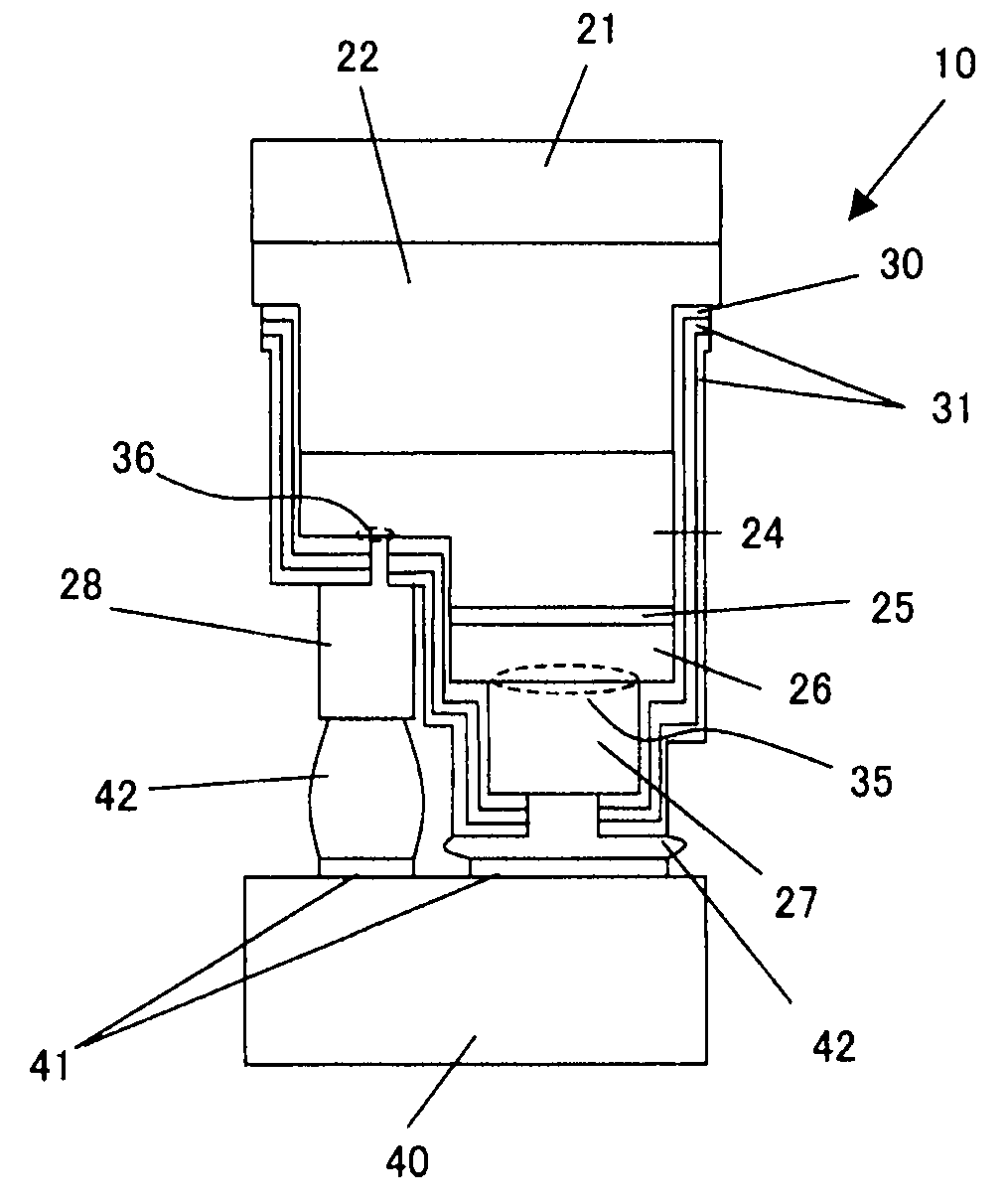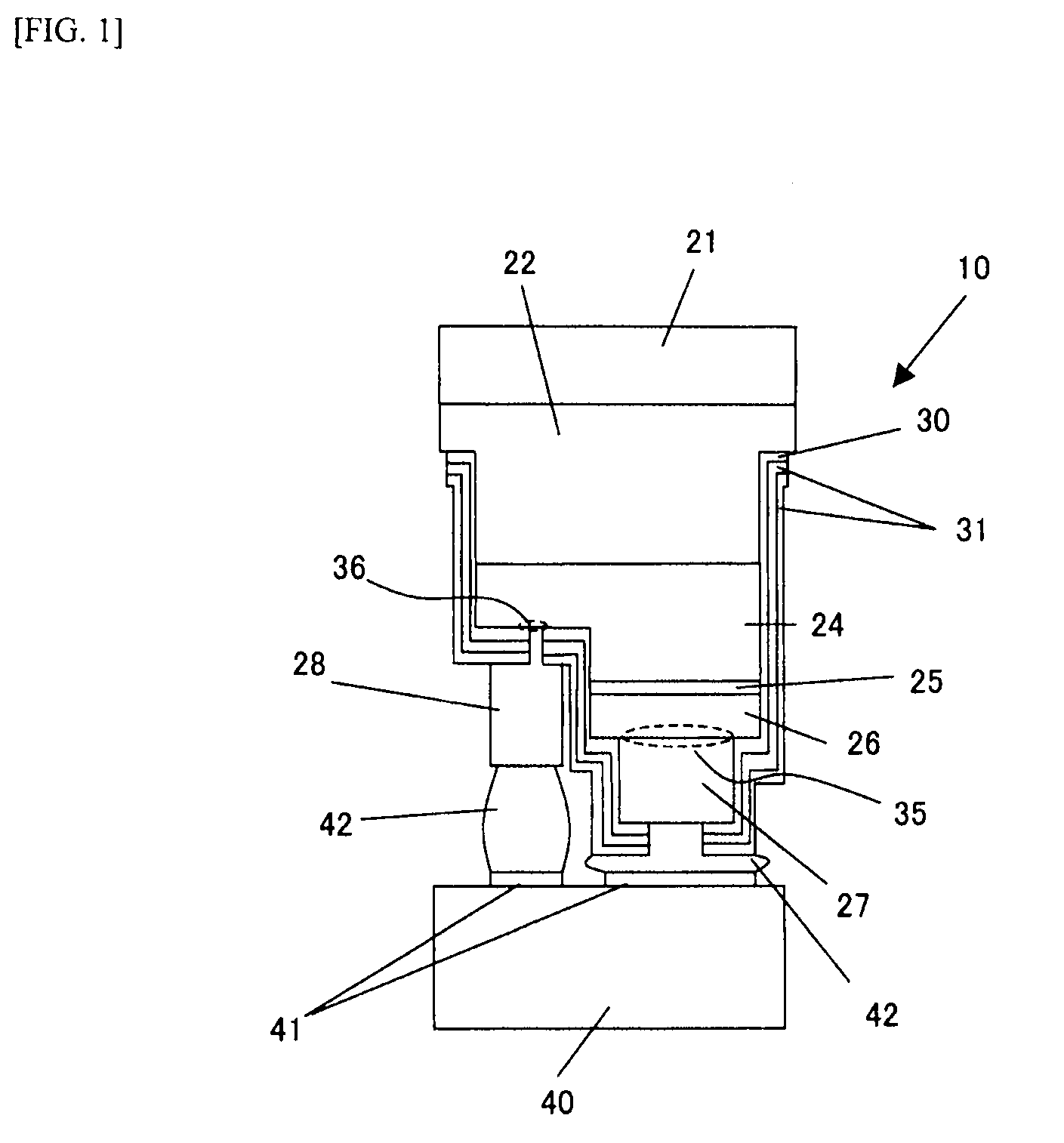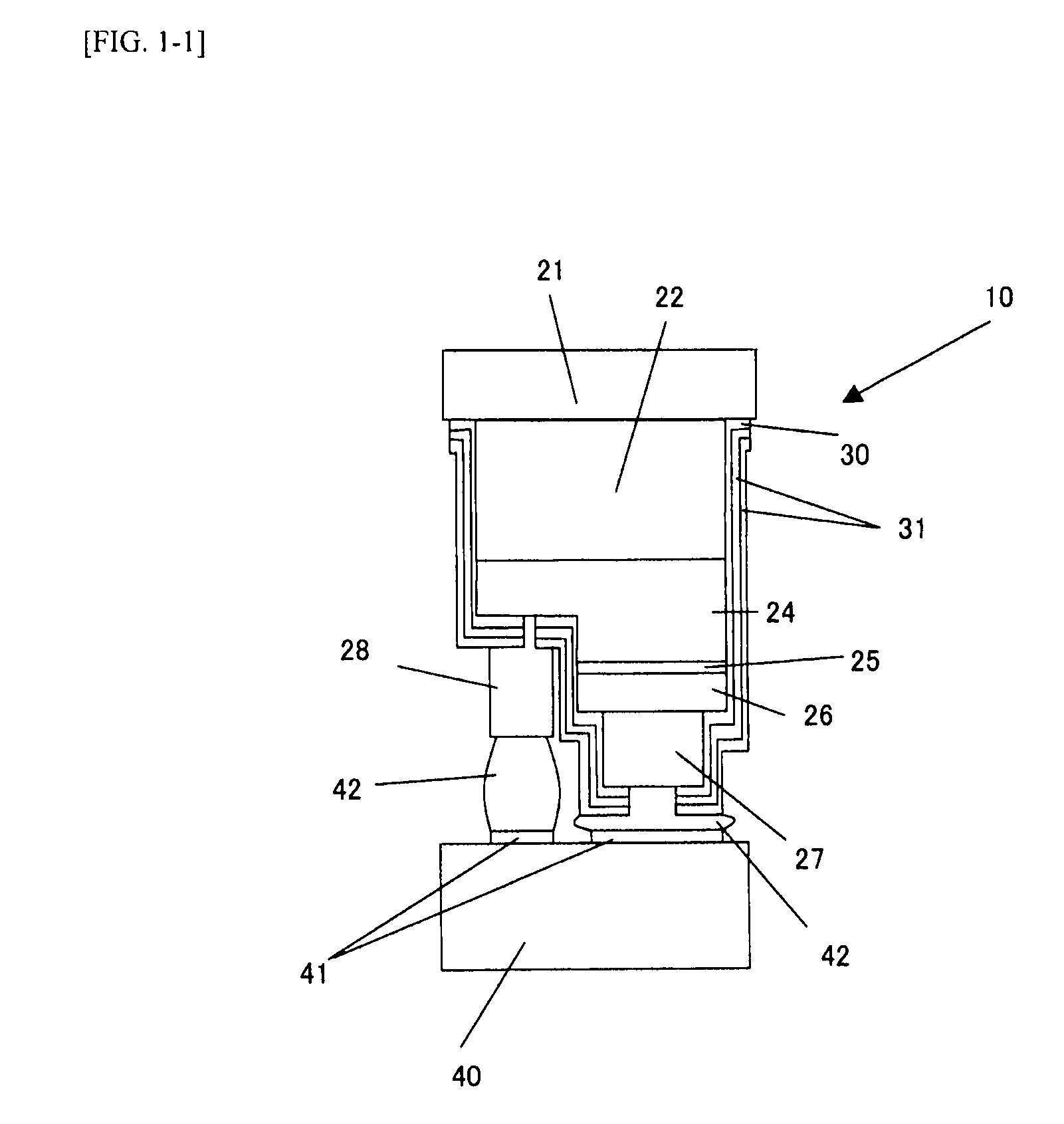Semiconductor light emitting element and method for manufacturing the same
- Summary
- Abstract
- Description
- Claims
- Application Information
AI Technical Summary
Benefits of technology
Problems solved by technology
Method used
Image
Examples
example 1
[0261]A light-emitting element shown in FIG. 10 was prepared by the procedure described below. See FIGS. 3 to 8 as relevant process drawings.
[0262]There was prepared a c+plane sapphire substrate 21 with a thickness of 430 μm, on which were formed undoped GaN grown at a low temperature to a thickness of 10 nm as a first buffer layer 22a using MOCVD and then undoped GaN as a second buffer layer 22b to a thickness of 4.0 μm at 1040° C.
[0263]Furthermore, an Si doped (Si concentration: 5×1018 cm−3) GaN layer was formed to a thickness of 4.5 μm as the first-conductivity-type (n-type) cladding layer 24. Furthermore, as the active layer structure 25, were alternately deposited undoped GaN layers to 13 nm as a barrier layer at 860° C. and undoped In0.06Ga0.94N layers as a quantum well layer to 2 nm at 720° C., such that 8 quantum well layers in total were formed and both sides were barrier layers. Then, was formed Mg doped (Mg concentration: 5×1019 cm−3) Al0.2Ga0.8N as the second-conductivit...
example 2
[0287]A light-emitting element was manufactured as described in Example 1, except that an insulating film was formed such that a crystal quality improving layer made of SiNx had a film thickness of 30 nm and an antireflection layer made of SiOx had a film thickness of 50 nm for adjusting a reflectance of a light vertically entering the insulating film from the thin-film crystal layer side to 0.02% and SiNx was not formed as the uppermost layer of the insulating film.
[0288]FIG. 12 is a graph showing relationship between an insulating-film reflectance at a wavelength of 405 nm and a film thickness of an antireflection layer (SiOx) when on GaN is deposited a crystal quality improving layer made of SiNx to a film thickness of 30 nm, on which is further deposited an antireflection layer made of SiOx to form an insulating film. The refractive indices at a wavelength of 405 nm for SiNx and SiOx used in this calculation were 1.92 and 1.45, respectively, from the preliminary experiments for ...
example 3
[0291]A light-emitting element was manufactured as described in Example 1, except that an insulating film was formed such that a crystal quality improving layer made of SiNx had a film thickness of 10 nm and an antireflection layer made of SiOx had a film thickness of 62 nm for adjusting a reflectance of a light vertically entering the insulating film from the thin-film crystal layer side to 0.6% and SiNx was not formed as the uppermost layer of the insulating film.
[0292]FIG. 13 is a graph showing relationship between an insulating-film reflectance at a wavelength of 405 nm and a film thickness of an antireflection layer (SiOx) when on GaN is deposited a crystal quality improving layer made of SiNx to a film thickness of 10 nm, on which is further deposited an antireflection layer made of SiOx to form an insulating film. The refractive indices at a wavelength of 405 nm for SiNx and SiOx used in this calculation were 1.92 and 1.45, respectively, from the preliminary experiments for r...
PUM
 Login to View More
Login to View More Abstract
Description
Claims
Application Information
 Login to View More
Login to View More - R&D
- Intellectual Property
- Life Sciences
- Materials
- Tech Scout
- Unparalleled Data Quality
- Higher Quality Content
- 60% Fewer Hallucinations
Browse by: Latest US Patents, China's latest patents, Technical Efficacy Thesaurus, Application Domain, Technology Topic, Popular Technical Reports.
© 2025 PatSnap. All rights reserved.Legal|Privacy policy|Modern Slavery Act Transparency Statement|Sitemap|About US| Contact US: help@patsnap.com



